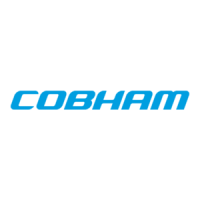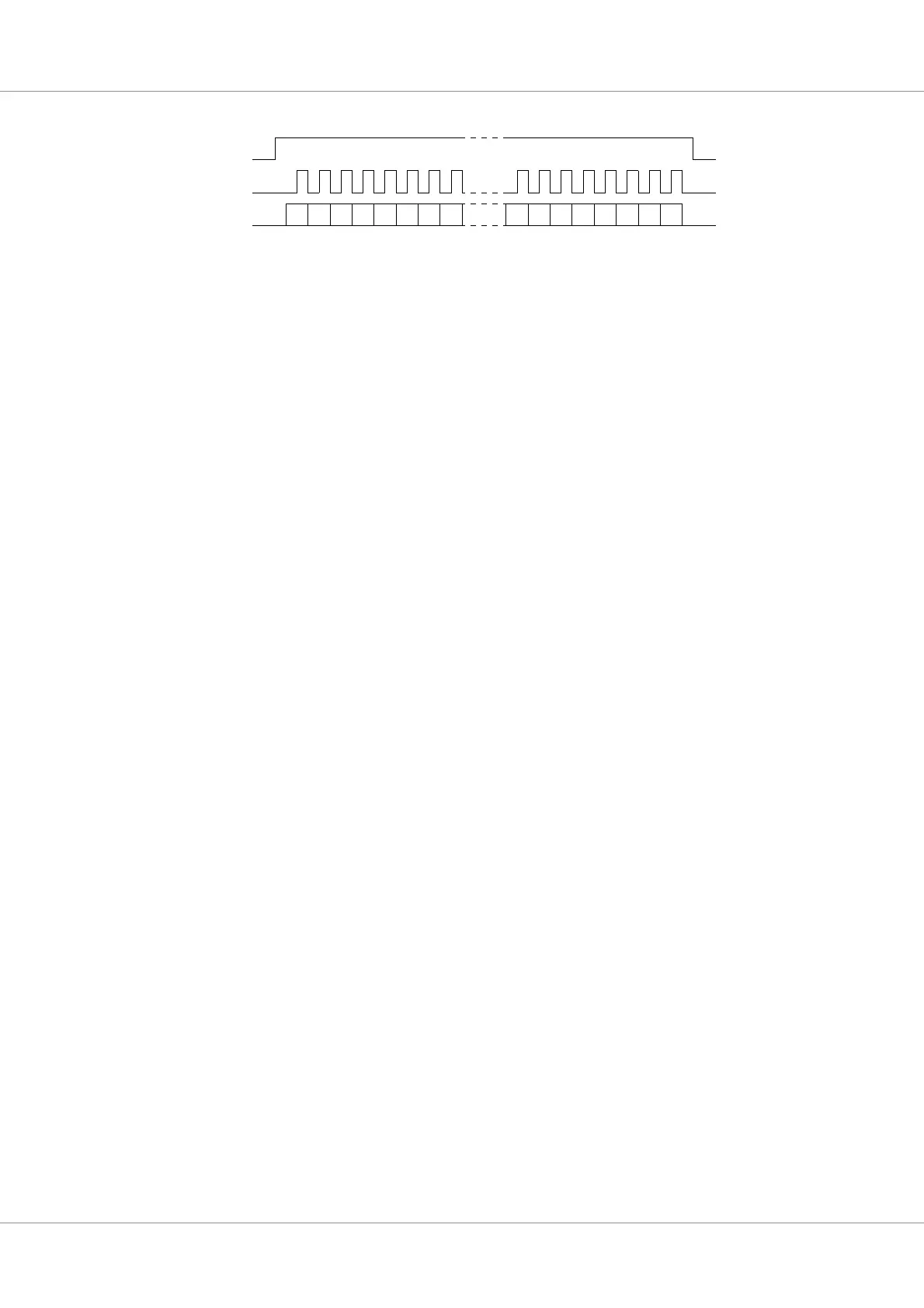GR712RC-UM, Jun 2017, Version 2.9 186 www.cobham.com/gaisler
GR712RC
26.2.2 Waveforms
Figure 78. Telecommand input protocol
Delimiter
Clock
Data
0 1 2 3 4 5 6 7 n-8 n-7 n-6 n-5 n-4 n-3 n-2 n-1
MSB LSB
26.3 Coding Layer (CL)
The Coding Layer synchronises the incoming bit stream and provides an error correction capability
for the Command Link Transmission Unit (CLTU). The Coding Layer receives a dirty bit stream
together with control information on whether the physical channel is active or inactive for the multi-
ple input channels.
The bit stream is assumed to be NRZ-L encoded, as the standards specify for the Physical Layer. As
an option, it can also be NRZ-M encoded. There are no assumptions made regarding the periodicity or
continuity of the input clock signal while an input channel is inactive. The most significant bit (Bit 0
according to [ECSS-E-ST-50-04C]) is received first.
Searching for the Start Sequence, the Coding Layer finds the beginning of a CLTU and decodes the
subsequent codeblocks. As long as no errors are detected, or errors are detected and corrected, the
Coding Layer passes clean blocks of data to the Transfer Layer which is to be implemented in soft-
ware. When a codeblock with an uncorrectable error is encountered, it is considered as the Tail
Sequence, its contents are discarded and the Coding Layer returns to the Start Sequence search mode.
The Coding Layer also provides status information for the FAR, and it is possible to enable an
optional de-randomiser according to [ECSS-E-ST-50-04C].
26.3.1 Synchronisation and selection of input channel
Synchronisation is performed by means
of bit-by-bit search for a Start Sequence on the channel
inputs. The detection of the Start Sequence is tolerant to a single bit error anywhere in the Start
Sequence pattern. The Coding Layer searches both for the specified pattern as well as the inverted
pattern. When an inverted Start Sequence pattern is detected, the subsequent bit-stream is inverted till
the detection of the Tail Sequence.
The detection is accomplished by a simultaneous search on all active channels. The first input channel
where the Start Sequence is found is selected for the CLTU decoding. The selection mechanism is
restarted on any of the following events:
• The input channel active signal is de-asserted, or
• a Tail Sequence is detected, or
• a Codeblock rejection is detected, or
• an abandoned CLTU is detected, or the clock time-out expires.
As a protection mechanism in case of input failure, a clock time-out is provided for all selection
modes. The clock time-out expires when no edge on the bit clock input of the selected input channel
in decode mode has been detected for a specified period.
26.3.2 Codeblock decoding
The received Codeblocks are decoded using the standard (63,56) mod
ified BCH code. Any single bit
error in a received Codeblock is corrected. A Codeblock is rejected as a Tail Sequence if more than
one bit error is detected. Information regarding Count of Single Error Corrections and Count of
Accept Codeblocks is provided to the FAR. Information regarding Selected Channel Input is provided
via a register.

